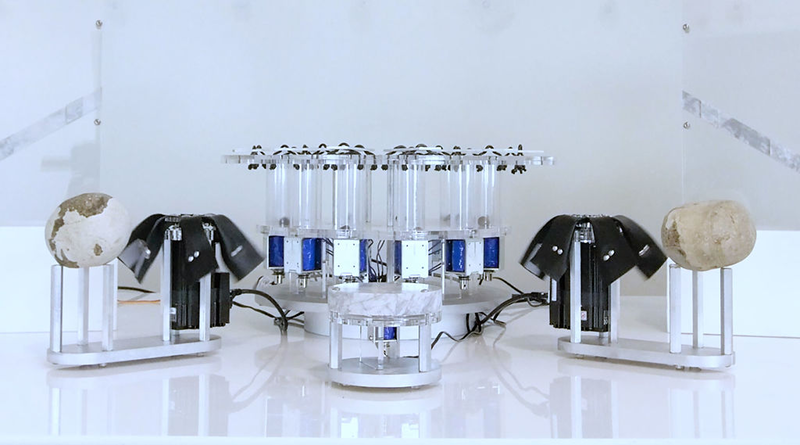When we think of a xylophone we envision hitting the keys from above with mallets. But this robot instrument launches stones from below to play a tune. [Niel] calls the device a Pinger and it is part of a Rock Band — all instruments using rocks.
Although the original post has “xylophone” in it, this musical instrument is technically a glockenspiel because it uses metal keys instead of wood. Either way, it’s a work of art; the instrument’s creator ([Neil Mendoza]) was participating in Adobe’s Autodesk’s Pier 9 artist-in-residence program when he built it.
The keys were cut using a water jet, a process not easily in reach for most of us. But you could make do with a different process in a pinch. On the face of it, fabrication seems simple, but there’s software to calculate the right size for the keys depending on the material. The cuts need to be precise to yield an in-tune instrument.
The circular part is laser-cut acrylic, acting as a base for each key. Below the plate there is a cylinder positioned in the middle of the bar which keeps the stone from getting away. When the solenoid fires, the stone flies up and strikes the key, creating a ringing tone but also adding to the body of sound with a rattle when it falls back down to the base. The entire thing is driven by MIDI, so it can play a lot of tunes besides the biographical “Here Comes the Sun” (since, apparently, the pebbles are out in the sun). Check that out in the video below.
This couldn’t help but remind us of another solenoid-driven xylophone — whose keys were machined out of aluminum stock. There’s also the multixylophoniomnibus.















I like the glockenspiel bits… but the magnet flingers and the leather whips on the rocks seem superfluous to me!
i just realized how funny this comment would be without the context of the post
But how can you have rock music without leather and metal studs?
hackaday i say most of the time you are ridiculous about 2 emails out of 19 you make my ripper file
Despite the horrible sound of the magnets and motors it plays a very nice tune in a nice way.
I love the clean looking way it was made and the nice tune it plays, so I would say, well done.
If this is art… then I must confess that I like art.
most mechanical players use solenoids but this one uses servos
https://www.youtube.com/watch?v=69pGYTYSEug
Now I want some popcorn.
I’m a total sucker for this kind of stuff – someday when I don’t have to work for a living I’m going to make these sorts of things full time…
Precise machining in not needed at all to tune the tone bars (not keys), in fact that would only happen in a theoretical production line. Grinding from the center will flatten the pitch, from the ends will sharpen pitch.
That’s very well executed, though as with so many of these, I’m fairly sure it’d sound nicer without the (necessarily out of time) noise of the solenoids themselves.